REVIEW: The Legend of Zelda: Echoes of Wisdom – A New Spin on an Old Formula
It’s Zelda’s time to shine!
The Legend of Zelda: Echoes of Wisdom has been in the hands of gamers for a while now, and the discourse online has already been quite… vibrant. Much has been said about the game’s performance issues, the pros and cons of navigating the echo menu system, and how the echoes themselves function as the primary gameplay mechanic. And while I’ll get into all of these topics and more, my biggest takeaway after rolling the credits is that Echoes of Wisdom is the most fun I’ve had with a Zelda title in a very, very long time.
The opening of Echoes of Wisdom features Hyrule’s favorite hero, Link, as he’s storming a dark fortress to save the captured Princess Zelda. The atmosphere is ominous, with fallen pillars, shadows held back by torches, and enemies around every corner. After battling his way through this miniature gauntlet that serves as a combat tutorial, Link ascends a flight of stairs to confront his arch nemesis: Ganon. It’s a quick fight reminiscent of the final encounter in A Link to the Past, but after Link lands the fatal blow, Ganon merely laughs in response and disappears, leaving naught but his spear behind.
As Link approaches Zelda (once more caged in a magical crystal), a technicolor rift appears beneath Ganon’s spear, dragging Link down into what we’ll later come to know as the “Still World.” Before he takes his final breath, he fires an arrow to break Zelda’s cage, cracking the crystal. Zelda manages to break free, and as she begins to leave, the rift seems to come alive, chasing after her through the fortress and consuming everything in its path until she makes her narrow escape. Exhausted, she slowly walks to the edge of a cliff to survey her kingdom, with Hyrule Castle off in the distance, and the title card fades onto the screen.
While the first chunk of gameplay is familiar to longtime fans of the Zelda series, it also distinguishes itself in some exciting new ways. Even though Echoes of Wisdom is a “2D” Zelda game in theory, it functions more like a “3D” Zelda game in practice. Remember how exciting it was that Link could jump at will in Breath of the Wild? Well, there’s a dedicated jump button here, too – and for the first time you can also target enemies in a top-down Zelda game, which to me is the most radical change Nintendo could have implemented. After beating Echoes of Wisdom, I replayed A Link to the Past and A Link Between Worlds, and the lack of a targeting feature in those games was such a bummer.
Also worth noting here is that the camera angle in Echoes of Wisdom is not truly “top-down” like those older games, but rather angled in such a way to simulate a 2D top-down view. There is an incredible depth to Echoes of Wisdom that makes the game feel more like a 3D Zelda title, albeit with a fixed camera. A Link Between Worlds feels much flatter by comparison, even though it’s made with 3D assets – and despite the near identical visuals, the Switch remake of Link’s Awakening feels more constrained because it’s a 1:1 remake of an old Gameboy game (complete with screen loads). No, Echoes of Wisdom feels like the proper fusion of classic 2D Zelda and modern 3D Zelda, merging the best of both styles into something that’s familiar but uniquely its own thing – especially with how it handles the new echoes mechanic.
As the title implies, echoes are the primary gameplay mechanic of Echoes of Wisdom, but it takes a little while before you’re able to use it. After Zelda escapes the collapsed fortress, a series of unfortunate events occur that lands her in a prison cell. There she is visited by a fairy-like entity called Tri, who bestows upon Zelda the Tri Rod, which grants her the ability to capture “echoes” of the items (and creatures!) she encounters – the first of which is a table she uses to escape her prison cell. This is where the fun really begins, and where the game starts to click, because Echoes of Wisdom is much more a puzzle game than the action game the opening might have led you to believe.
Case in point, Zelda’s escape from prison is essentially a stealth mission where you must collect more echoes to keep yourself hidden and avoid the guards patrolling the vicinity. But the fun part is that there isn’t a single solution to this problem! Much like the shrines in Breath of the Wild and Tears of the Kingdom, you are presented a task and given an array of tools with which to solve said task. Sure, there’s always an ideal way to solve the problem, but how you choose to do so is entirely up to you – and those creative solutions increase based on the number of echoes available to you.
I’ll be honest, I wasn’t fully sold on the mechanic when Echoes of Wisdom was revealed, and it took a few minutes for my brain to fully process how it all worked, but once it clicked then everything fell into place. Collecting the echoes is a game in and of itself, particularly when it comes to the creatures you encounter. Once you defeat them, a smaller shimmering version of them appears in their place and you can then learn how to summon an echo of them. By the end of the game, you’ll have an arsenal of 100+ echoes to summon, but there is a catch!
Each echo that Zelda conjures up uses some of Tri’s power, which is symbolized by the number of triangles floating behind the top of their head (like a little ponytail). For instance, an old bed uses a single triangle, but a Spear Moblin uses two triangles. At the start of the game, Tri only has three triangles of power to use for echoes, but by the end of the game Tri can have up to six triangles. How do you get more triangles, you ask? Well, it’s all about closing the rifts and increasing Tri’s power, which means Zelda has to enter… the Still World.
It wouldn’t be a Zelda game without some kind of alternate world to explore. Previous games had Link traversing The Dark World, The Twilight Realm, and even a mirror-version of Hyrule called Lorule, so I was thrilled to discover that Echoes of Wisdom throws Zelda into the Still World. This physics-defying realm of chaos is spread by the rifts that have popped up all over Hyrule, and it’s up to Zelda and Tri to enter the Still World and close the rifts. These sections of the game might be my favorite because they’re the most un-Zelda-like thing you’ll ever find in a Zelda game. They feel like something from Super Mario Galaxy, with all the scrambled floating chunks of Hyrule you have to traverse with on-the-fly puzzle platforming, and I say that with the highest level of praise. The Still World is a supremely fresh concept that I genuinely love, and I was so sad every time I closed one of the rifts because it meant I couldn’t go back and experience those places again.
But back to Tri’s power! Once you complete your missions in the Still World and close the rifts, Tri levels up and one of two things happen. They either get an additional triangle to use for summoning echoes, or the cost of certain high-value echoes goes down; so instead of a Moblin costing two triangles, it only costs one, which gives you more flexibility with your rotation of echoes. It’s a really great mechanic and the game really opens up as you collect more echoes and gain more power, but this also introduces the game’s biggest pitfall: the menu navigation.
If you’ve played Tears of the Kingdom, you are intimately familiar with the never-ending scroll menu that pops up to fuse an item to your weapons. Unfortunately, that’s the exact kind of menu the developers implemented here for navigating your echoes. It’s not so bad when you only have 10 or so items to choose from, but once you hit dozens, and then 100+ echoes, it becomes a chore to scroll through and find the exact echo you need. There are sorting options (Last Used, Most Used, Last Learned, Cost, and Type) to help you more quickly grab the right echo, but there’s no avoiding the scroll if the echo you need isn’t front and center in those filters. It’s not the end of the world, and I wasn’t too bothered by it, but it can certainly interrupt the flow of gameplay – especially if you’re in a dicey combat situation.
Speaking of combat, the other gameplay mechanic you’ve probably seen in the commercials and trailers features Zelda “transforming” into glowing blue version of Link to fight off enemies the traditional way – using Link’s sword, shield, bow, and bombs (the exact weapon layout he used in the opening of the game). I think it’s important to note that Zelda is not actually transforming into Link (you can tell by the tiara and hairstyle under her hat), but rather taking on his power and abilities in a “swordfighter form” for a short period of time.
This transformation time can be extended by finding “Might Crystals” scattered around Hyrule, as well as by closing the rifts. You can also use Might Crystals to upgrade Link’s weapons, so if you ever find yourself in a sticky situation, you can quickly transform and dispatch your foes without the use of echoes. I’ve heard some people call this cheating, or an “easy mode” for the game, but I think the swordfighter form a clever way of changing things up and giving players a more direct option for tackling a challenge – particularly the boss battles at the end of dungeons.
That’s right, classic Zelda dungeons are back, and even moreso than what we had in Tears of the Kingdom, but there’s still a bit of a twist. Instead of using a specific item for each dungeon, Echoes of Wisdom conveniently places a new echo in or around the dungeon area that will be pivotal for solving a good chunk of the dungeon’s puzzles. It’s also in the dungeons where you learn a pair of new Tri Rod abilities: Bind and Reverse Bond. Using Bind will send Tri shooting to a monster or object, and whatever Tri binds to will then follow Zelda’s movements, while Reverse Bond will allow Zelda to follow the motion of whatever she is bound to.
If that sounds confusing, it’s because it is – at least to me! Outside of the situations where I absolutely had to use these abilities, I avoided them like the plague because I could not sort out these mechanics in my head. I don’t know if it was a mechanics issue or a me issue, but I could never get Bind and Reverse Bond to really work effectively. More often than not I would move in the wrong direction, or the ability wouldn’t connect at the right time. Even still, though, the dungeons in Echoes of Wisdom are a huge highlight.
Each dungeon is beautifully structured and features some truly ingenious puzzles to solve. The boss fights are also a ton of fun, requiring you to think on your feet to figure out the best way to take them down – even with the swordfighter transformation at your disposal! I didn’t know how much I had missed Zelda dungeons until we got a whole new set (and even some bonus dungeons you can miss), and I pray to the goddesses Nintendo never abandons them again. They are truly what makes or breaks a Zelda game in my mind.
A good Zelda game also requires different towns and regions to explore, and Echoes of Wisdom has them in spades. The overall map in this game is very much inspired by A Link to the Past, so much so that you could lay that game’s map on top of Echoes of Wisdom’s and the majority of landmarks would line up near perfectly. You’ve got all the staples like Kakariko Village, the Lost Woods, Zora’s Waterfall, and Death Mountain – but Echoes of Wisdom expands the borders beyond what was found in A Link to the Past, incorporating elements from the entire Zelda franchise.
Yes, you can explore Kakariko Village once more, but now you can visit Link’s hometown of Suthorn Village, or the coastal Seesyde Village – both of which are new to this game. You’ll also explore fan favorite locations like Gerudo Town in the desert and Goron City in the mountains, and Echoes of Wisdom finally canonizes the fact that the River Zora and Sea Zora are different (but related!) races, leading to some super dynamic story elements. And after being MIA for nearly a decade, the Deku Scrubs have made their glorious return! They live in the absolute prettiest location in the game, Faron Wetlands, in a little town called Scrubton.
Upon visiting each location, Zelda will encounter a variety of characters who need her help or have a challenge for her to beat, which are tracked in the Adventure Log. In this menu, you can see what your Main Quest objective is or scroll through the list of available Side Quests to see what you can tackle next. Furthermore, the Adventure Log lets you activate one specific quest at a time, automatically marking important locations on your map, making it easier to navigate through the game.
This quest system is essentially a pared-down version of what you find in Breath of the Wild or Tears of the Kingdom – and while the quests not as involved as the trading system in Link’s Awakening or the multi-layered side quests found in Majora’s Mask, I still found all of the side quests in Echoes of Wisdom to be sufficiently satisfying. There’s also an extensive fast travel system that you build with various warp points across the map, which cuts down on any backtracking you might need to do to complete all of the side quests. But even if you choose to run around on foot, the soundtrack will keep you company.
The Zelda franchise has always featured incredible music, even in the more recent games that bent more toward environmental ambiance than proper overworld themes. Thankfully, Echoes of Wisdom falls into the classic Zelda camp of having a robust and constant musical score. Music Director Hajime Wakai – who previously worked on The Wind Waker, Skyward Sword, Breath of the Wild, and Tears of the Kingdom – led his own team of composers to craft a truly remarkable score for Echoes of Wisdom. Each region, town, and dungeon have their own themes and soundscapes, making this version of Hyule feel more alive than previous 2D Zelda games. I especially love how Wakai’s team incorporated Zelda’s Lullaby into the Overworld Theme, making the game feel truly her own. I really can’t wait for this score to have a CD release, because I desperately need to have it in my music rotation.
Now, for as much good as Echoes of Wisdom has going for it, the biggest point of contention is the game’s performance. Visually speaking, Echoes of Wisdom is simply gorgeous to look at. Each region of the world feels vibrant and alive, and the graphical fidelity is a huge upgrade compared to the Link’s Awakening remake. Unfortunately, this bump in visuals comes at a steep cost: the frame rate. It’s honestly not great. Plenty of experts have already weighed in on this issue, so I won’t belabor the point, but the game is extremely choppy at times.
I played mostly in Handheld Mode, so it didn’t bother me as much as it did when I was in Docked Mode, but there’s no denying the Switch hardware was struggling to keep up with this game. However! In no way did I feel the frame rate issues detracted from my experience with this game. After a few minutes of running around, my eyes adjusted, and it felt like smooth sailing to me. Yeah, it hiccups a lot, but not as drastically as Link’s Awakening (to my eyes), and I think it’s a small price to pay for one of the best modern Zelda games.
There are many more things I haven’t covered yet in this review that I don’t want to get too into the weeds about, because half the fun of Echoes of Wisdom is discovering all the bells and whistles for yourself. I also won’t dig too deeply into the main storyline of this game, because it’s something everyone should experience for themselves, but I will say it went in a few directions I wasn’t expecting. And I think that’s what I love the most about Echoes of Wisdom. It is a game that treads familiar ground, but it puts its own spin on every single element of a traditional Zelda game – even down to the little spin dash move Zelda does to avoid enemies and cut through the grass.
I never would have expected Nintendo to craft such a singularly unique entry in the Zelda series, but that’s what makes Nintendo and this franchise so special. They always have the courage to try something new, the wisdom to build it correctly, and the power to delight fans with the end result.
Add Comment

autumnalblake
11d agoI've been a bit disappointed by the game unfortunately. It's decently fun, but when you can climb straight over trees and cliffs, the sense of exploration and discovery isn't really there for me. The dungeons were quite linear and had very few interesting puzzles, and the reverse bond ability, which could have made for some great challenges, I haven't found a use for since getting it at the start. There's only a small handful of echoes that really let you do something new, and you get most of them near the start. The rate of finding new echoes really slows down a lot as you get into the game, so there isn't much of a sense of progress. It's a solid game and I don't dislike it, but it hasn't delivered the things I love about Zelda.
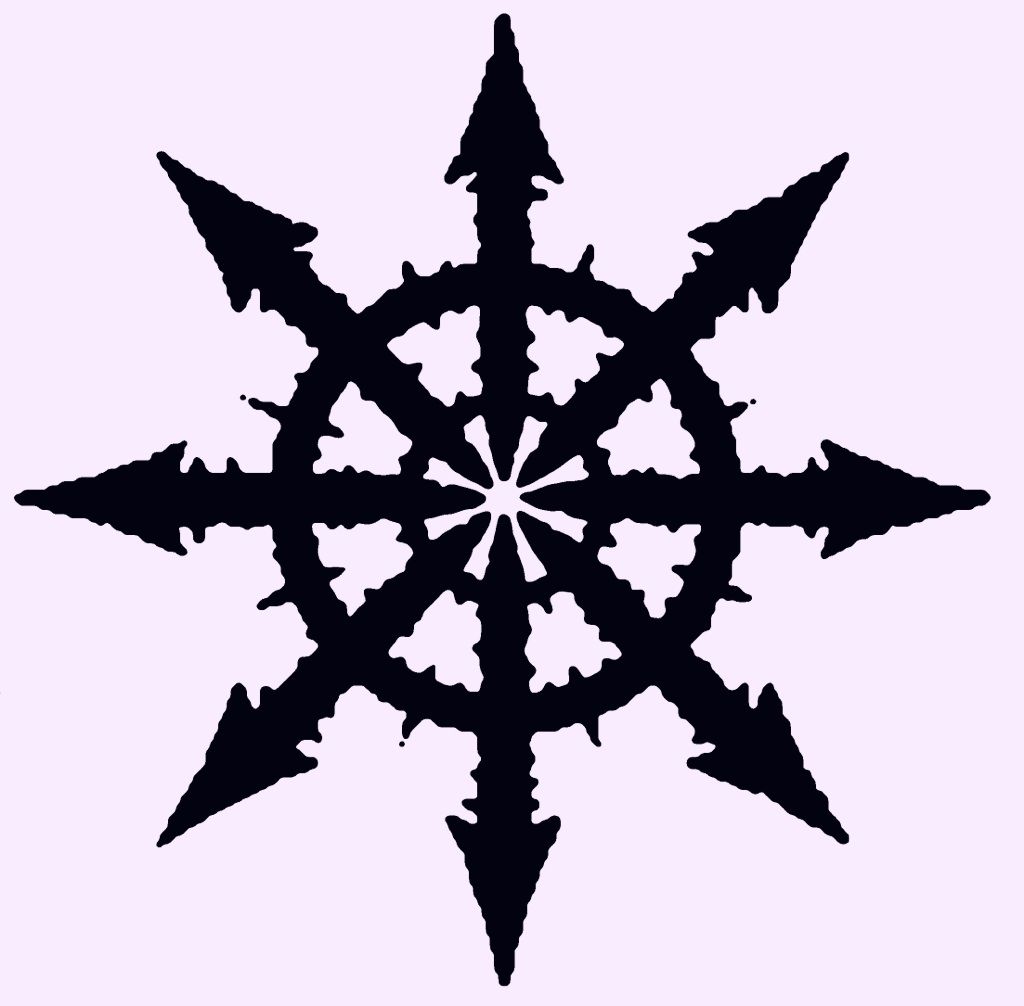
Thanks for this. Seems like one I'll skip.





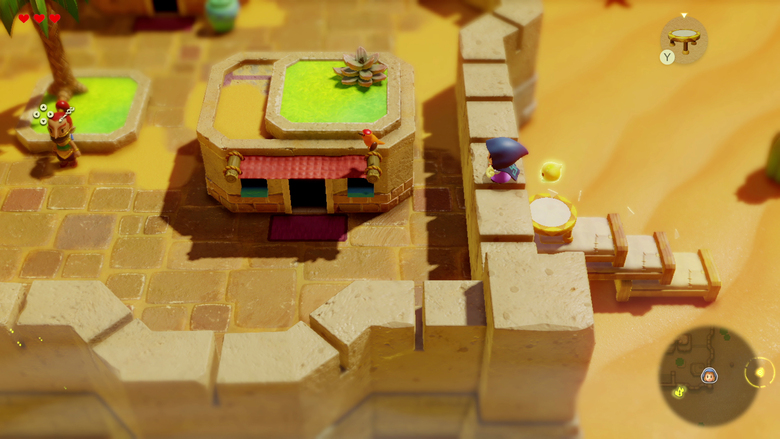


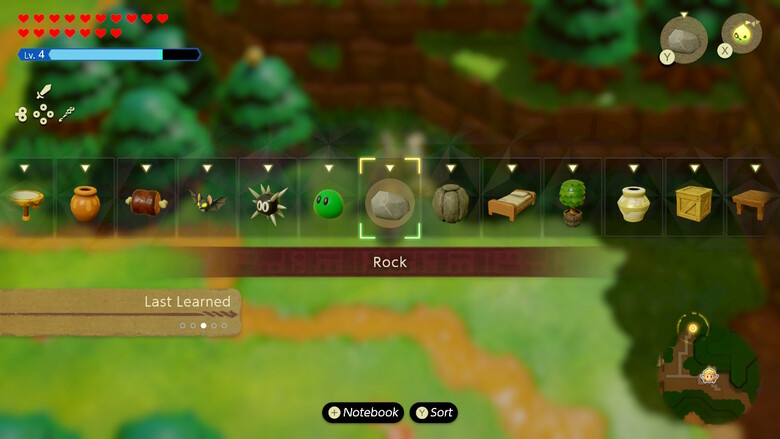

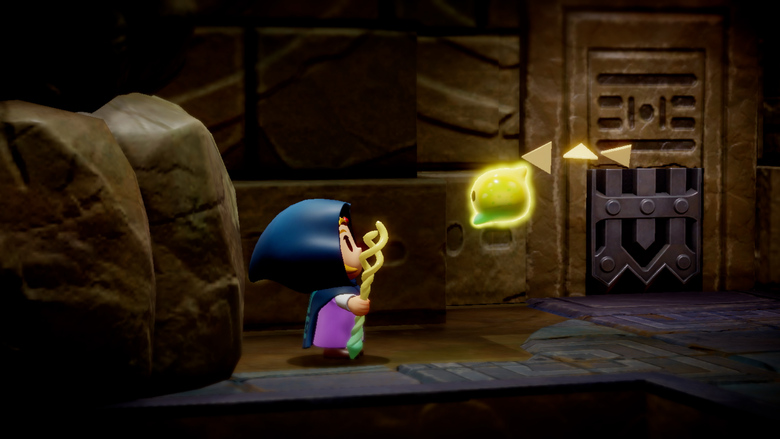





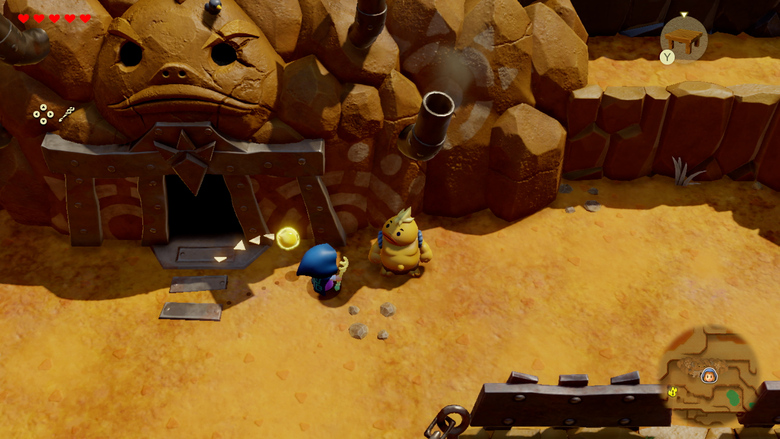






Comments (2)